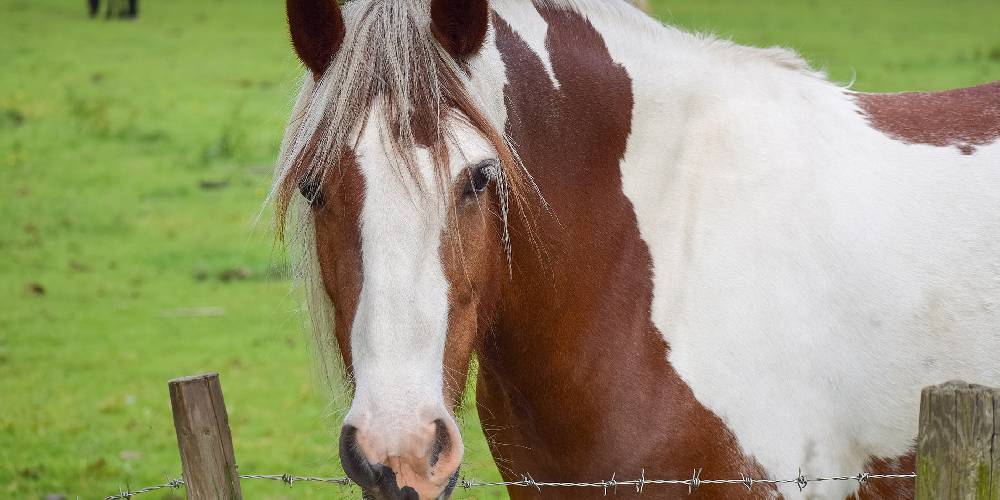There are a great variety of colors and patterns that a horse’s coat can be found in. Some of the most beautiful coat patterns have unique names and telling them apart can be difficult. Learning to identify these colors and tell them apart can be really beneficial. I always looked at spotted horses and pinto horses and noticed different patterns, but i never knew what these patterns were called.
What Are The Different Coat Patterns Found In Horses?
There are a variety of different coat patterns seen in many horse breeds across the world. The names of some of these patterns are overo, tovero, tobiano, and sabino, though there are many more beyond just these four. These coat colors and patterns that consist of patches are primarily seen in the American Paint horse. The spotted horse colors like the blanket, leopard, and snowflake are patterns mainly seen in the Appaloosa breed. Roan coat patterns are seen mainly in Quarter Horses but can be found in many other breeds as well. There are so many coat patterns out there, it is hard to name them all.
Overo
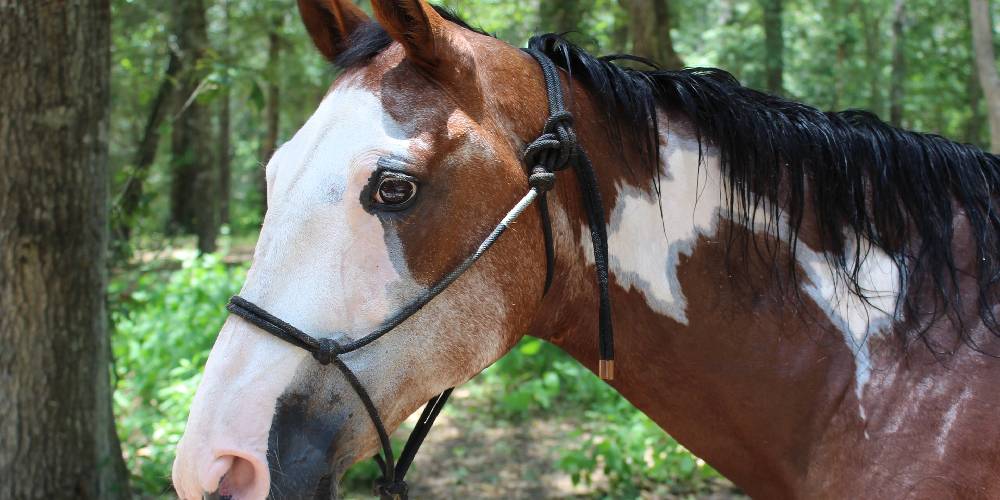
Overo horses are one of the many coat patterns that are found in paint horses, as well as a variety of other horse breeds. Overo horses can be white and any other solid color including palomino and buckskin. Sometimes an overo roan can be seen, but this is a fairly rare occurrence.
The overo stands out from the rest of the coat colors because the large patches on the overo’s body are very irregular in shape and often have jagged edges. There are not any smooth round lines found in overo horses. Another way to identify the overo is that the white patches of their coat do not go over the top of the horse, there is only one solid base color that goes along the crest, back, and hindquarters (Psst… if you don’t know what these parts of the horse are, read about the parts of the horse by clicking here!)
The tail of the overo is only one solid color and should not be showing any white to be considered a true overo (the only exception to this is if the horse is a palomino).
Tobiano
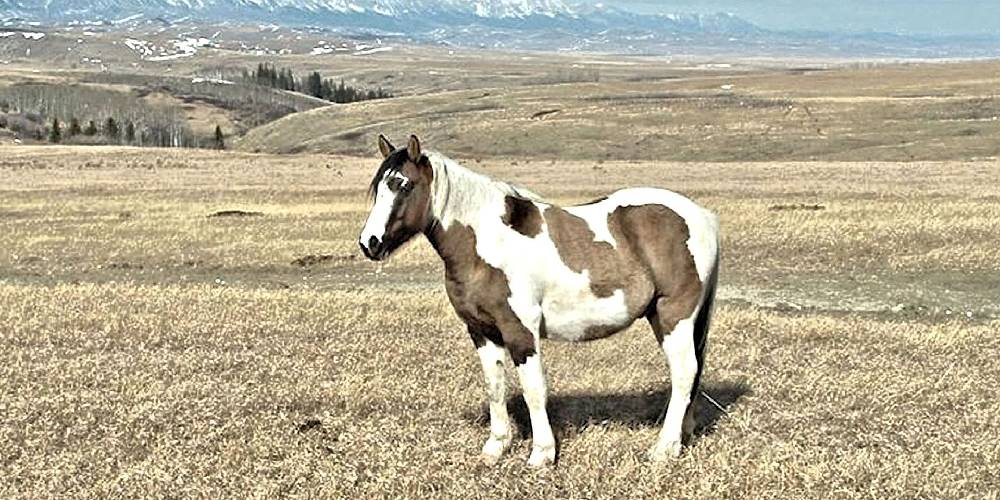
Like the overo, tobiano horses can be any solid color including buckskin and palomino. There are even known to be tobiano roans, though to see these horses is rare.
Tobiano horses are the most common pinto horses seen in the horse world. This horse has your typical smooth round patches that are often large and random. The tobiano can have white patches reach over the top of its body unlike the overo and these white patches can fall anywhere along the crest, back, or hindquarters.
The tail of a tobiano horse is always two-toned. The tail of the horse will be whatever the natural tail color would be for the base color, but with white and beige hairs mixed into it. This is sometimes called a skunk tail as there is often a dark stripe of hairs down the middle and the white and beige hairs will fall on the outside.
Tovero
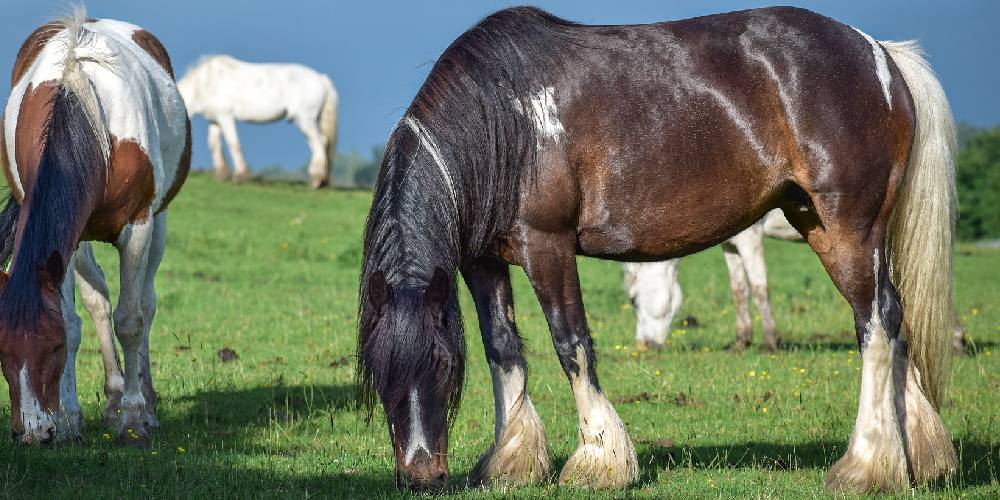
You might have guessed based on the name, but the tovero horse is kind of a mix of the overo and the tobiano. The reason some horses are classified as tovero is that they might carry characteristics from both patterns. Some of the common combinations found in toveros are:
- Smooth round patches on the body like the tobiano, but the white doesn’t extend over the back like the overo
- An overo coat, but the two-toned tail of the tobiano
- A mix of jagged and smooth patches making the patches difficult to identify
- A horse with a coat like a tobiano (consisting of smooth round patches), but a solid colored tail.
Tovero horses are identified as tovero when they can’t be identified as either overo or tobiano.
Sabino
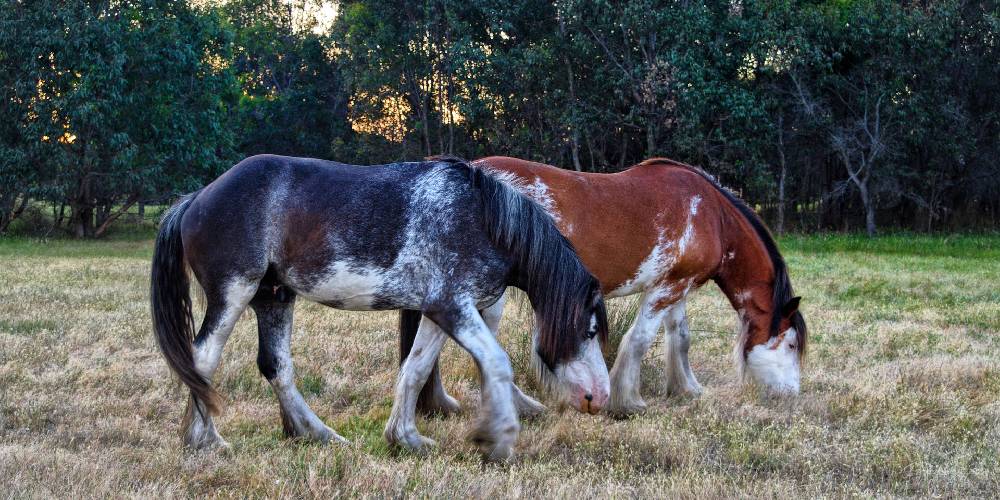
Sabino horses are often mistaken as horses with four stockings, but what many don’t know is that the white of a sabino horse extends past the horse’s legs and reaches under their belly.
Some Clydesdale horses can even appear to be sabino. This is a fairly rare coat pattern that can be seen in nearly any solid color including palomino and buckskin.
Piebald
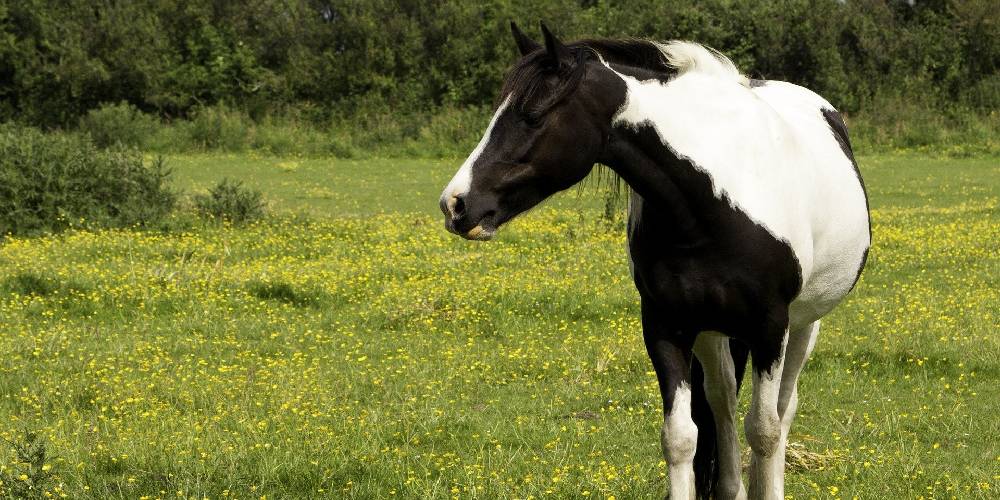
A piebald horse is an older term used to describe a patched horse. Piebalds can be overo, tobiano, and tovero, but must have black as their base color.
A piebald is just a black and white pinto horse.
Skewbald
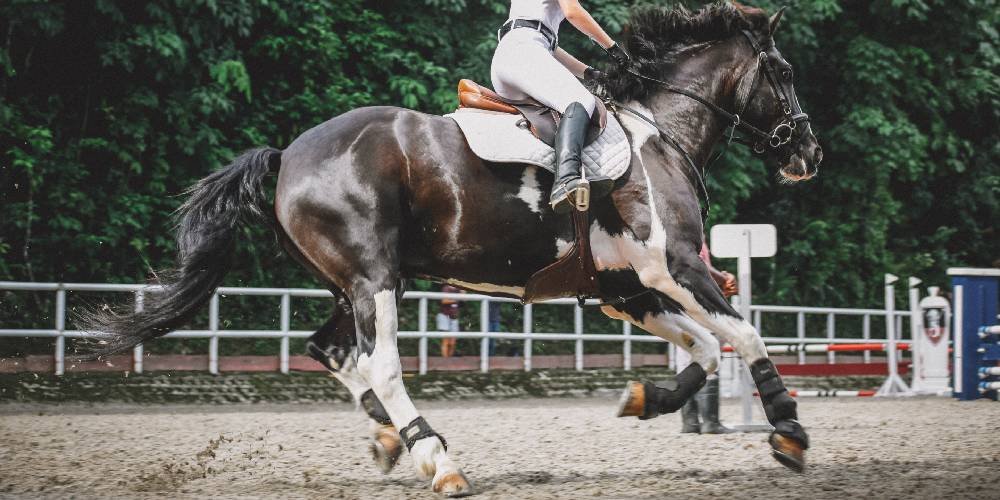
Skew bald horses also can include tovero, overo, and tobiano in their pattern options. Unlike the piebald, skewbald horses can have any base color.
This term can be used to describe any pinto horse other than black ones.
Blanket

The blanket pattern, sometimes called the snow cap pattern, is primarily seen in Appaloosas.
A blanket marking is basically a white patch on the hindquarters of a solid-colored horse. The blanket or snowcap marking can extend almost all the way to the shoulders and base of the neck.
This unique marking is really only called the snow cap marking when there is no other spotting or dark markings interfering with the white patch on the hindquarters.
Leopard

The leopard-marked horse is of the most common spotting patterns and can be seen in Appaloosas, knabstruppers, mustangs, and even some pony breeds.
Leopard colored horses are often seen as white all over, but with dark spots ranging from red-brown to black covering the body.
This coat color is names leopard because actual leopards have a lighter coat with dark sports.
Snowflake
The snowflake coat pattern is essentially the opposite of the leopard pattern. In the leopard patter horses are seen as white with dark spots, whereas in snowflake coats, the horse is seen as dark with light spots.
This pattern is called a snowflake pattern because it looks as if a dark horse is covered in snowflakes.
Roan
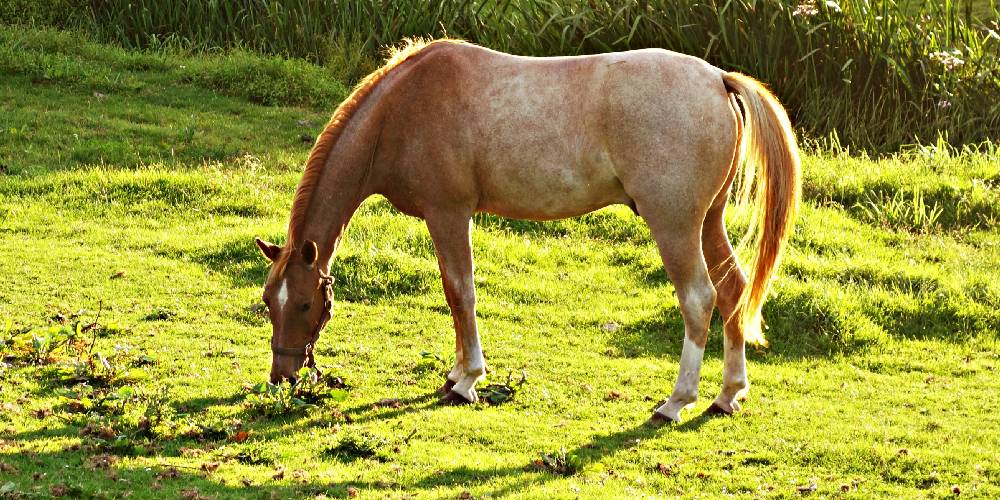
Roan horses can be seen in a number of breeds and types of horses. They can come in blue roan, red or strawberry roan, and bay roan. The most beautiful one in my opinion is the blue roan, and to make this coat pattern even more unique, these horses can also be pinto.
If you want to read more about roans, read my article all about them by clicking here!

